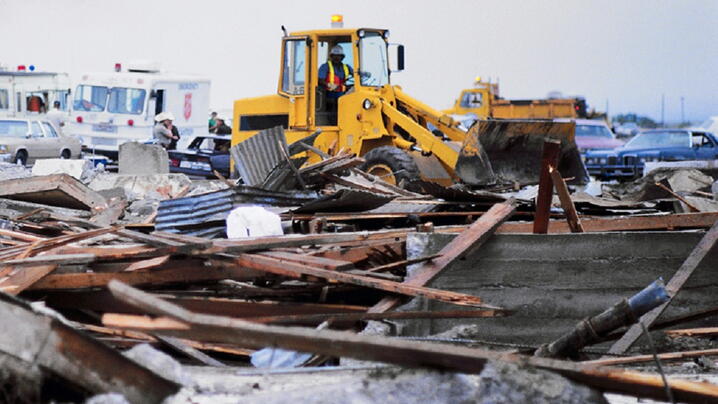
by Mark O'Mara, director of recovery, Hagerty Consulting.
Community leaders and managers spend countless hours planning for how to respond to catastrophic disasters. However, it is equally, if not more, important to have long-term recovery plans in place after the response has stabilized the effort and media focus turns elsewhere. As noted in a previous ICMA post, state and local government leaders are increasingly responsible for shouldering the disaster recovery burden. FEMA’s 2018-2022 Strategic Plan articulates this vision to have recovery be “federally supported, state managed, and locally executed.”
As tragic and devastating as disasters can be, the reality is that they are also an opportunity to rebuild smarter, stronger, and better than ever.
1. Smarter
Cost-Recovery Plans: One area in disaster planning that is often neglected is the accounting/finance piece of the puzzle. Communities must appropriately document all transactions related to any grant dollar received. This documentation should not only include money coming in versus money going out, but also an inventory list of all capital assets, buildings, and structures. Having the appropriate accounting mechanisms in place allows local governments to keep every dollar they have received and be "audit proof." Developing budget cost codes that can be used for disaster-specific activities and creating a grants management system to coordinate multiple grant streams across all projects are steps to improve the financial recovery of your community.
Procurement: In the aftermath of a disaster event, procurement is one of the biggest hurdles for recovering communities. Recovering communities often find the federal procurement process arduous and unable to keep pace with the demands of post-disaster recovery.
Following a disaster, a community might need access to capabilities to expedite recovery, which might include contracting debris hauling/monitors, disaster recovery and financial management consultants, supplemental emergency response staff for an EOC, or even food preparation and water supply. All contracted work must be competitively bid and comply with federal regulations in 2 CFR Part 200. FEMA encourages local communities or subrecipients to establish prequalified rosters of vetted, qualified contractors and solicit and award advanced or pre-positioned contracts prior to a disaster, saving precious time later.
2. Stronger
Both the FEMA Public Assistance Program (PA), as well as the new HUD Community Disaster Block Grant Mitigation (CDBG-MIT) program, provide funding opportunities to increase a community’s resilience. Often, these opportunities are either overlooked, viewed as too burdensome, or present economic hurdles. FEMA provides funding for mitigation and resilience through the following programs:
- Flood Mitigation Assistance (FMA): FMA grants are available to implement measures to reduce or eliminate risk of severe repetitive flood damage to buildings insured by the National Flood Insurance Program (NFIP). In FY19, $160 million is available for FMA grants.
- Pre-Disaster Mitigation (PDM): The goal of the PDM grant program is to reduce overall risk to the population and structures, while at the same time reducing reliance on federal funding from Stafford Disaster Relief and Emergency Assistance Act (Stafford Act) disaster declarations. In the FY19 application cycle, $250 million is available in PDM.
- Section 406 Hazard Mitigation: 406 mitigation funding is intended to increase resilience to facilities, components, and systems damaged in a presidentially declared event. Local communities collaborate with the state and FEMA to identify and develop cost-effective and technically feasible mitigation strategies, increasing resilience to future events.
- Section 404 Hazard Mitigation Grant Program (HMGP): The HMGP program is funded as a percentage of eligible costs following a declared event. It differs from Section 406 HM funding in that it can be applied to facilities that were not damaged as a result of the declared incident, often statewide, and can be applied to structural and nonstructural measures (such as planning, property acquisition, and drainage buyouts projects).
3. Better
Alternative Procedures: FEMA’s Section 428 PA Alternative Procedures Program for Permanent Work (Section 428) can be a valuable tool for a faster, more flexible, and less costly disaster recovery, while also improving long-term resilience against future disasters. Section 428 provides disaster-affected communities the option to use capped grants to restore disaster-damaged facilities or utilize this funding for non-disaster related projects, without penalty. This program allows a community to rebuild with the future in mind, not simply to restore to “in-kind” pre-disaster status.
Management Costs: Administering disaster relief is very complex and comes with rules and regulations. As The Hill reported, funding can come from 20 different federal government agencies to implement approximately 90 different programs. However, both FEMA and HUD understand that their programs have an administrative burden and management cost to them. For example, FEMA’s new Section 324 Management Costs policy allows applicants to obtain up to 5 percent of total eligible damages for disaster recovery consultant fee reimbursement.
Applying this framework of Smarter, Stronger, Better to your disaster recovery can save time and resources while improving the overall outcome in your community.
New, Reduced Membership Dues
A new, reduced dues rate is available for CAOs/ACAOs, along with additional discounts for those in smaller communities, has been implemented. Learn more and be sure to join or renew today!

